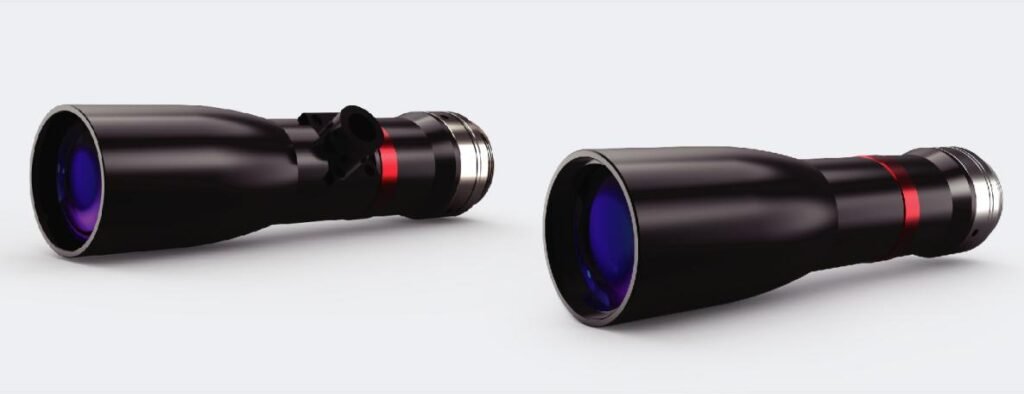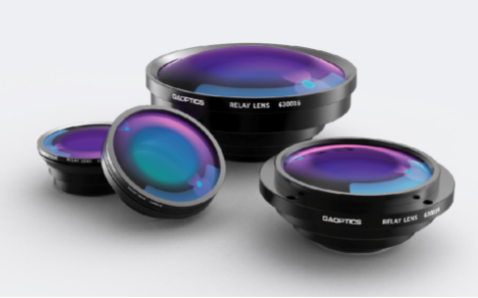An imaging lens, also known as an optical lens, is commonly used in the field of industrial automation or machine vision. It is also called an industrial lens and industrial camera lens. It is an imaging component used in an imaging system. Its main function is to image a target on an image sensor. The lens is an important element in the imaging system, and the imaging quality directly affects the overall performance of the imaging system. In recent years, with the development of imaging technology, imaging products have had a huge impact on our lives. The development of the imaging industry also constantly poses new technical challenges for imaging lenses
Fixed focal length lens
A fixed focal length lens refers to a lens with a fixed focal length. The larger feature of this type of lens is that it has only one focal length or only one field of view. Fixed-focus lenses are widely used in industrial automation or machine vision systems because of their stable image quality and convenient use, so they are often also called industrial lenses, industrial fixed-focus lenses, industrial camera lenses, and machine vision lenses.

Telecentric lens
A telecentric lens generally refers to a lens with a constant magnification within a certain working distance range. Because of their design characteristics, telecentric lenses have two major characteristics: large depth of field and low distortion. In the measurement application, the characteristics of the telecentric lens are particularly adequate.

SWIR lens
SWIR lens is also called a near-infrared lens or short-wave near-infrared lens. It is a fixed-focus lens whose working wavelength is mainly in the near-infrared. The full name of SWIR is Short Wave infrared Radiation-short wave infrared, the general wavelength range is 800-2500nm, so the SWIR lens can also be understood as a lens with a working wavelength of 800-2500nm. Because the band of near-infrared cameras is generally 900-1700nm, some manufacturers define SWIR lenses as lenses with a working band of 900-1700nm.

360° lens
This type of lens is widely used in cylinder inspection, such as medicine bottles, bottle caps, nuts, etc. The field of view of ordinary lens imaging is outward expansion. The closer the measured object is to the lens, the greater the magnification and the larger the imaging size. Objects close to the lens will block all objects of the same size behind. Therefore, the side of the cylinder placed in the center of the field of view will be completely obscured by the top surface, and images cannot be captured. The 360° outer surround view lens adopts a brand-new optical path design, which can realize the shrinkage of the lens’s field of view, and the field of view is limited to an inverted cone angle. The closer the measured object is to the lens, the smaller the magnification and the smaller the imaging size. A cylinder placed in the center of the field of view, the side will not be blocked by the top surface, and the lens can capture the side image. When using a common lens to detect the top and side surfaces of a cylinder, it is necessary to use a combination of multiple lenses and cameras to separately acquire images and stitch the acquired images. With the combination of multiple lenses and cameras, it is difficult to solve the problems of image stitching and high system failure rate. Therefore, for the detection of cylindrical samples, such as medicine bottles, bottle caps, nuts, etc., the 360° outside view lens provides a more stable solution, which has been widely used in these occasions.

VIS-NIR lens
VIS-NIR lens refers to a lens whose working wavelength covers visible light and near-infrared light. This kind of lens can match the VIS-NIR camera well and has a wide range of applications in the fields of industrial automation, machine vision, PCB board inspection, biology, and medicine.

Zoom lens
A zoom lens refers to a lens with a variable focal length, which changes the focal length to obtain different angles of view. In the imaging system, fixed-focus lenses can be used to shoot objects of different sizes or different working distances.

Relay lens
Relay lens is mainly used for mobile phone camera module testing, notebook camera module testing, and lens module testing. With the continuous development of mobile phone cameras with higher pixels, the image quality requirements of the module at a long distance are getting higher and higher. If the traditional test method is used for inspection, a huge inspection space will be required and a larger inspection error will be generated. With the popularity of mobile phones, relay lenses have also been widely used in the field of factory automation.


